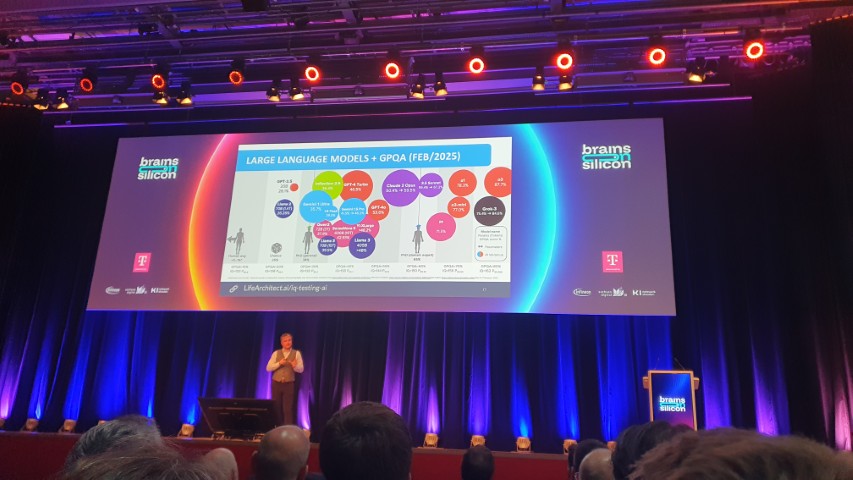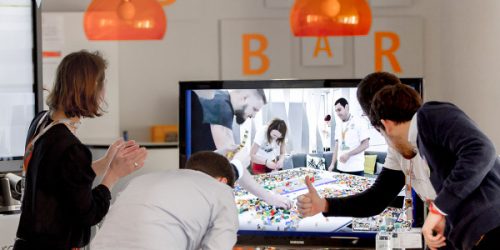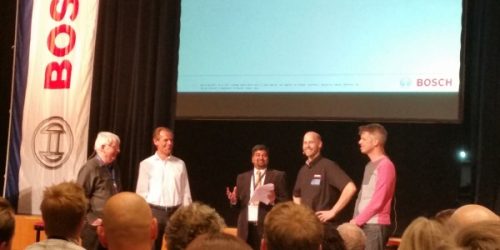Some notes about Brains on Silicon 2025
Right now I’m dealing with the challenges of how artificial intelligence is changing both products and the way we work together. That’s why I went to Brains on Silicon 2025, held in Dresden on 22–23 October 2025 – the first large-scale AI conference ever hosted in the city.
It was great to see such an ambitious event happening locally, bringing together researchers, industry leaders, and creative minds from across Germany. Two days full of talks, keynotes, and conversations proved that Dresden is not just building chips, but also shaping ideas about the intelligent systems that will run on them.
Rather than trying to summarise everything, I’ve captured the main ideas and a few moments that stood out to me.
Day 1 – When Machines Become Partners
The first day opened with John Paul Li (Google), who spoke about non-human identities – digital agents that act and authenticate like people inside business systems. His talk was both technical and philosophical: we now work at the boundary between humans and machines, and the real value emerges exactly there. He reminded everyone not to treat AI as a magic hammer for every problem:
“We are good at teaching machines symbols, but we still struggle to understand meaning.”
Sven Lindenhahn (Staffbase) then shifted the focus to communication inside organisations. He showed how AI can help companies move from top-down announcements to interactive, scalable dialogue. The idea of AI as a conversation partner instead of a broadcaster was refreshing and practical.
In the afternoon, Hans Piechatzek (move elevator) shared how his agency applied AI in creative and marketing work – from automating content to building an AI-driven website. His open and honest view of what worked and what failed made the talk one of the most relatable sessions of the day.
Philipp Klöckner, investor and strategist, followed with an economic perspective: AI is redefining competitive advantage.
“The next unicorns will come from teams that learn faster, not those that spend more.”

Later, Prof. Dr. Florian Röhrbein (TU Chemnitz) explored neurorobotics – how biological principles such as neural plasticity and sensory feedback can inspire embodied intelligence. It was one of the few talks bridging neuroscience and technology, reminding us that learning and adaptation are as physical as they are digital.
Day 1 ended with an optimistic but grounded tone: AI’s real potential unfolds when humans and machines learn and create together.
Day 2 – From Mindset to Infrastructure
Day 2 began with an energetic keynote by Frank Kebbekus, who addressed the emotional side of transformation: fear, curiosity, and speed. He encouraged leaders to face uncertainty with openness and empathy – a good reminder that transformation starts with communication, not technology.
“AI is coming fast, and we can’t freeze. Talk to your teams. Move forward — don’t play dead.”
Frank Fitzek (TU Dresden) then took the stage to discuss edge computing and connectivity. He described data networks as the nervous system of digital society, showing that AI innovation depends as much on reliable infrastructure as on clever algorithms.
After that, Daniel Dietze (digitalwert) introduced his concept of Vibe Marketing – exploring how AI can sense and react to the emotional tone of content. His presentation showed creative potential rather than pure automation: AI as a co-creator that helps marketers understand audiences more deeply and tell stories that resonate.
Dr. Christian Koitzsch (ESMC) brought the focus back to hardware and semiconductors. His session explained how European chip manufacturing is critical for AI sovereignty – ensuring that the computing power behind AI remains both local and trusted.
Ralph Engelmann (queo ValueTec) delivered one of the most grounded developer-oriented talks, on documentation in software development. He made a strong case that well-structured documentation is not a burden but a key enabler for AI-assisted coding and knowledge transfer – essential when teams start mixing human and machine contributors.
Finally, Magdalena Wekenborg (TU Dresden) gave insights into stress research and healthy human–AI interaction, highlighting the need to design systems that empower, not exhaust, people.
Connecting the Dots
Across both days, several themes kept surfacing:
- AI at the boundary: Real progress happens where humans and machines collaborate.
- Culture before code: Openness, dialogue, and learning matter more than tools.
- Infrastructure matters: From data pipelines to semiconductors, AI depends on a strong backbone.
- Human focus: Trust, mental health, and transparency must remain central.
- Start small, learn fast: Successful teams experiment early and scale what works.
Final Thoughts
Brains on Silicon 2025 was not just a technology showcase – it felt like a snapshot of how industry, academia, and creativity are coming together around AI. The sessions were diverse, but the spirit was consistent: pragmatic, open, and human.
I also had many interesting exchanges with people facing similar transformation topics, met a few former colleagues, and ended the event enjoying good music and relaxed conversations at the party. A perfect close to two inspiring, very human days about the future of intelligent systems — and a proud moment to see Dresden on the map as a real hub for meaningful AI dialogue.


